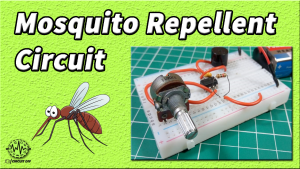Introduction
Looking to experiment with electronics and create something that’s both fun and entertaining? Look no further than the burp sound simulator circuit! Initially created as a quick lash-up, this circuit has proven incredibly popular – especially with children – and is still in use today. While it may be difficult to describe the effects of this circuit in words, its unique sound is sure to delight and entertain.
This blog will take a closer look at how the burp simulator works, the components you’ll need to build it, and some tips for getting the most out of your circuit. So let’s dive in and learn how to create a fun and unique sound using electronics!
Hardware Required
| S no | Components | Value | Qty |
|---|---|---|---|
| 1 | Transistor | BC109 | 5 |
| 2 | Capacitor | 1uF, .05uF, 30uF | 2, 2, 2 |
| 3 | Resistor | 22k, 2.2k, 150k, | 4, 5, 3 |
| 4 | Variable Resistor | 250k | 3 |
| 5 | Switch | – | 1, 1 |
| 6 | Speaker | 8ohm | 1 |
| 7 | Transformer | – | 1 |
Circuit Diagram

Choosing the Appropriate Components
When selecting the components, the resistor Rx should be chosen for maximum effect, with a starting value of 47 ohms. Adding additional resistors to the supply lines will also influence the output, with a starting value of 47 ohms. Although the circuit is demonstrated with BC109 transistors, surplus transistors from 50p packs can be used for the project. Once the operation is established, tested transistors can be swapped with surplus types.
Circuit Explanation
How the Burp Simulator Operates
The circuit comprises three multivibrators operating at different frequencies and can be controlled by the settings of VR1, VR2, and VR3, resulting in a wide variety of sounds. The three multivibrators function simultaneously, and we can adjust each frequency. Tr3 and Tr4 generate high frequencies, Tr5 and Tr6 generate low frequencies that do not repeat for several seconds, and Tr1 and Tr2 generate intermediate frequencies. The stages impact one another and synchronize extraordinarily, resulting in a pattern of sound that may not repeat for several seconds. The variety of combinations and sounds that can be produced is remarkable, with some sounding like animals or machines.
Understanding Astable Multivibrator
The multivibrator circuit configuration is quite tolerant when it comes to transistor types. While the circuit is designed with three multivibrators, additional multivibrators can produce further effects. If an amplifier is available, replacing T1 with a 2.2K ohms resistor and connecting a 0.1 FF capacitor from the operational side of Rx to an amplifier will enable more burping effects to be heard.
Reproducing the Sounds
While reproducing the sounds may seem straightforward by copying the settings, the tiniest adjustment to the controls can significantly alter the sequence and pattern. As a result, each burping sound produced is unique and cannot be duplicated.
Conclusion
Although describing the burp simulator circuit’s effects in words is challenging, listening to the final results is the best way to appreciate its capabilities. While the circuit is intended solely for amusement, its popularity with children and the remarkable variety of sounds it can produce make it a worthwhile project.














